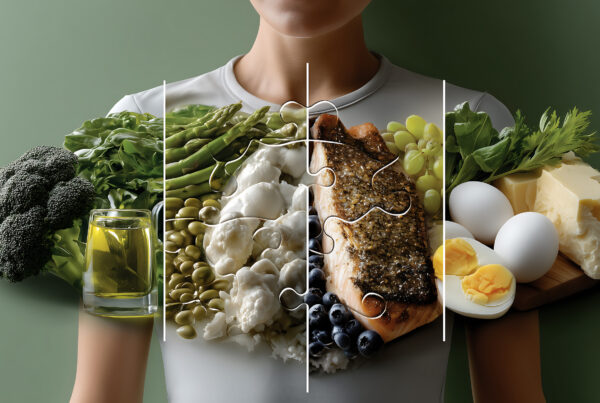”Question: What do real nutritionists say about dieting and health food recommendations?
Reading time: 5 Minutes
MWi Hack:
- Learn practical actions to help you take better control of your nutrition
MWi Summary:
-
- Here are some rules to help you form better nutrition habits:
- Load your plate with vegetables
- Don’t starve yourself
- Cut down on processed foods
- Don’t just count calories
- Enjoy your food
- Here are some rules to help you form better nutrition habits:
When it comes to healthy eating, myths, and misconceptions abound. It doesn’t help that new — and often contradictory — diet advice emerges every day. But the basics of eating right really don’t change.
As a nutritionist, I try to clear up the confusion that people often have about how to eat well. Here are 10 nutrition rules (yes, rules!) that I teach my patients, and that I wish everyone knew.
1. Load your plate with vegetables.
Even the USDA has abandoned the confusing food pyramid in favor of a simpler “healthy plate” diagram. To build a healthy plate, fill half your plate with vegetables — and, no, French fries don’t count! Choose “crunchy” vegetables, such as broccoli, green beans, Brussels sprouts, and leafy greens like kale and Swiss chard. On the other side of the plate, put whole grains or legumes in one quarter and a serving of healthy, lean protein in the other.
2. Eat a balanced breakfast.
You’ve heard it before, and it’s true: breakfast is the most important meal of the day. Eating a healthy breakfast is absolutely crucial to help kickstart metabolism, improve cognitive function, and help you make better food choices throughout the day. The ideal meal includes protein, healthy fat, and some complex carbohydrates.
3. Don’t starve yourself.
This strategy is not only unhealthy — it nearly always backfires. If you don’t eat enough calories throughout the day, you’ll be more likely to overindulge at night. When you focus your efforts all day on skimping on food, you set yourself up for an eating binge later on. And instead of sitting down to a healthy evening meal, you’re more likely to reward yourself for being so “good” all day by reaching for a calorie-bomb like a pint of ice cream or piece of cake.
4. Ask questions when you eat out.
Menus can be very deceiving, and even healthy-sounding entrées might be loaded with butter or smothered in a heavy sauce. Don’t be afraid to take control. Ask for details about how a dish is prepared, request sauces and dressings on the side, and make sure the server knows that you’re looking for a simple, healthy selection.
5. Have a plan when you hit the grocery store.
You know it’s a bad idea to go to the store when you’re hungry, but that’s not the only key to smarter shopping. The biggest mistake people make is not knowing what they need and, instead, browsing the aisles for inspiration. That leads to buying more packaged foods and less fresh, whole foods. Go in with a list based on recipes you intend to cook for the week and focus your shopping on the store’s perimeter, which is home to fresh produce, dairy, meat, and fish.
6. Cut down on processed foods.
Not all packaged or pre-made food is bad for you, but you’ll need to read nutrition labels carefully in order to choose wisely. Ideally, you should gravitate toward healthy options that make nutritious cooking easier, like frozen vegetables and canned beans, and skip the meals in a box that are loaded with preservatives, hidden sources of fat, and too much sugar and sodium.
7. Limit your sodium and sugar.
Putting down the salt shaker and skipping sugar in your coffee is a step in the right direction, but that’s not where most people get the majority of their salt and sugar. Sodium and sugar are rampant in most packaged foods from pasta sauce and mac and cheese to rice mixes and soups. Start by checking the nutrition label on your breakfast cereal (some pack up to 20 grams of sugar per serving!).
Here’s a quick tip: Divide the amount of sugar in grams by 4 and you get the number of teaspoons. Would you really pour five teaspoons of sugar into your cereal bowl?
8. Don’t just count calories.
Not all calories are created equal. People eat those 100-calorie packs of cookies or other snacks and focus on the fact that it’s only 100 calories, but they don’t pay attention to what else they’re getting, especially in terms of sugar and fat. The better approach: Focus on healthy, nutrient-dense foods that are naturally low in calories and rich in essential vitamins, minerals and fiber.
9. Switch to whole grains.
When it comes to carbohydrates, brown is better. Whole-grain foods (like whole wheat, brown rice, and oatmeal) contain more nutrients and fiber than their processed white cousins. Not only are these complex carbohydrates healthier for you (higher fiber intake has been linked to reduced risk of diabetes and heart disease), but they also help keep you full longer. So instead of shunning carbs in an effort to lose weight, start by swapping out the white ones for whole grains.
10. Enjoy your food.
This may sound obvious, but many people think that healthy eating and enjoyment are mutually exclusive. Pretend you never heard the word “diet.”‘ Instead, work toward a lifestyle built on healthy choices that are going to work for the long term. In order to achieve that goal, find nutritious foods you enjoy eating. Food should be something you relish and that nourishes you. It’s not just fuel.
MWi would like to thank Karyn Forsyth Duggan for sharing these insights with our community. Hit the button below to go to the original article:






